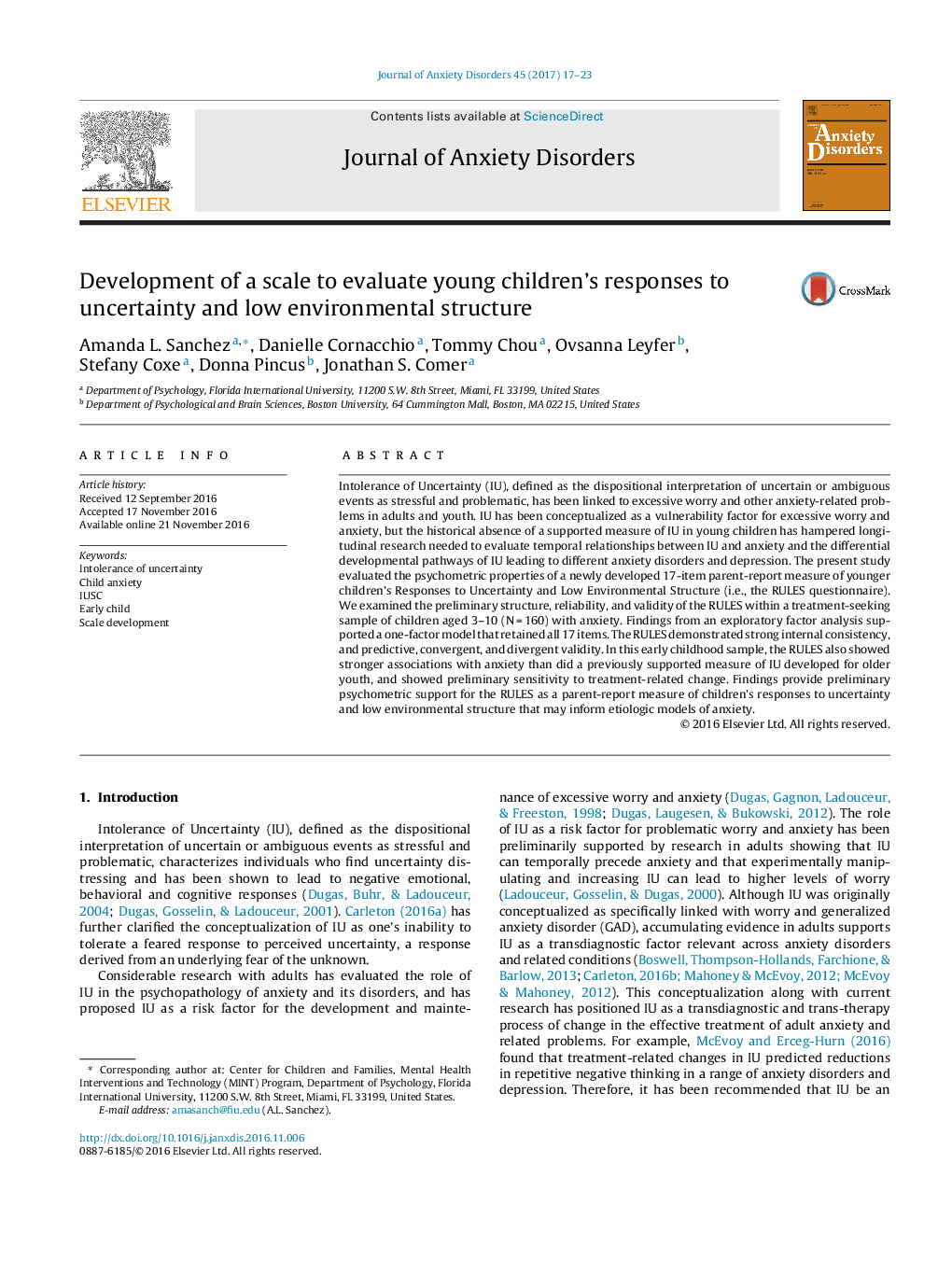| Article ID | Journal | Published Year | Pages | File Type |
|---|---|---|---|---|
| 5038934 | Journal of Anxiety Disorders | 2017 | 7 Pages |
â¢IU is linked with anxiety, but we have lacked a measure of IU in young children.â¢We developed and evaluated a parent-report of early child IU (i.e., the RULES).â¢We identified a one-factor model that retained all 17 RULES items.â¢The RULES showed strong predictive, convergent, and divergent validity.â¢The RULES demonstrated preliminary sensitivity to treatment related change.
Intolerance of Uncertainty (IU), defined as the dispositional interpretation of uncertain or ambiguous events as stressful and problematic, has been linked to excessive worry and other anxiety-related problems in adults and youth. IU has been conceptualized as a vulnerability factor for excessive worry and anxiety, but the historical absence of a supported measure of IU in young children has hampered longitudinal research needed to evaluate temporal relationships between IU and anxiety and the differential developmental pathways of IU leading to different anxiety disorders and depression. The present study evaluated the psychometric properties of a newly developed 17-item parent-report measure of younger children's Responses to Uncertainty and Low Environmental Structure (i.e., the RULES questionnaire). We examined the preliminary structure, reliability, and validity of the RULES within a treatment-seeking sample of children aged 3-10 (NÂ =Â 160) with anxiety. Findings from an exploratory factor analysis supported a one-factor model that retained all 17 items. The RULES demonstrated strong internal consistency, and predictive, convergent, and divergent validity. In this early childhood sample, the RULES also showed stronger associations with anxiety than did a previously supported measure of IU developed for older youth, and showed preliminary sensitivity to treatment-related change. Findings provide preliminary psychometric support for the RULES as a parent-report measure of children's responses to uncertainty and low environmental structure that may inform etiologic models of anxiety.
